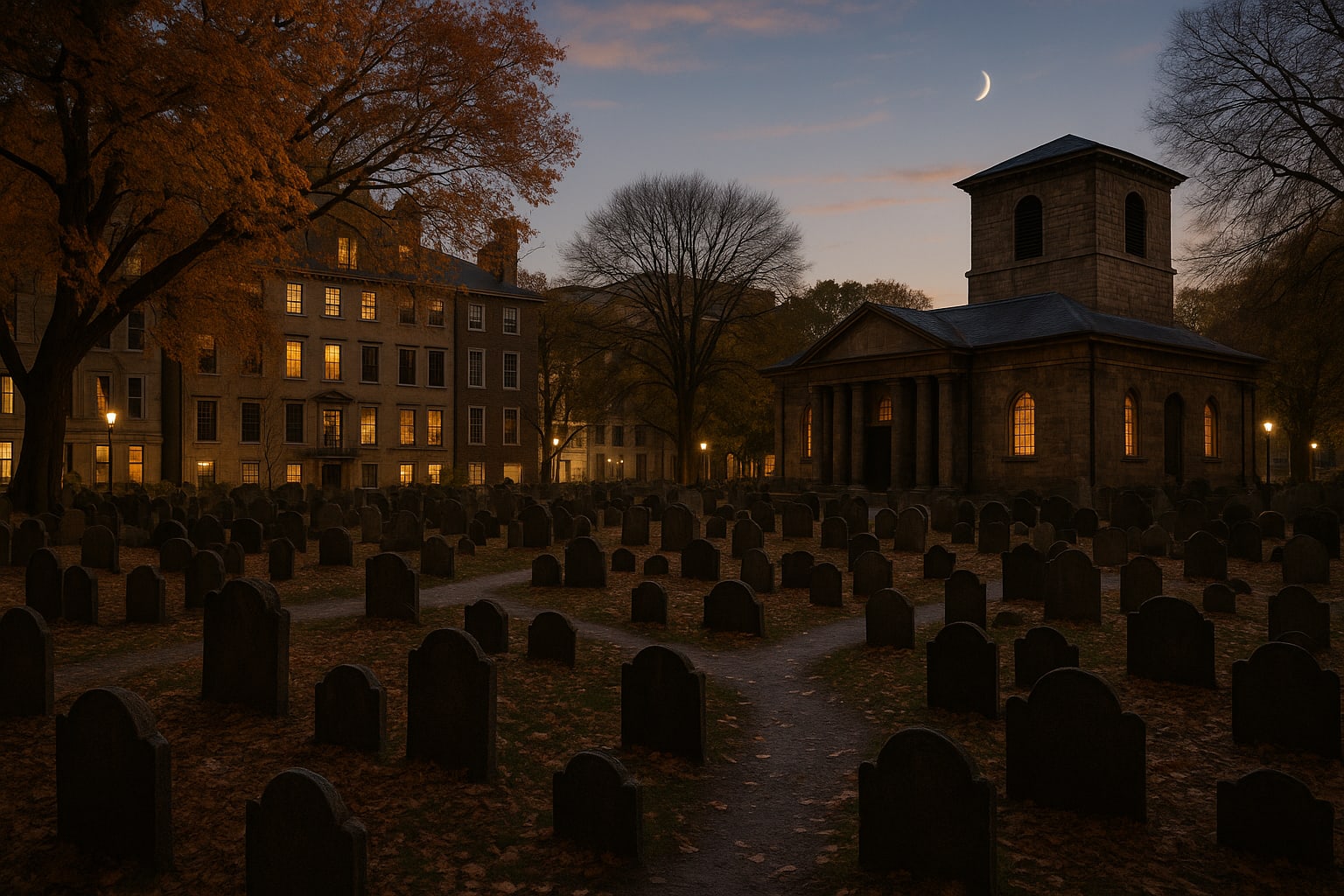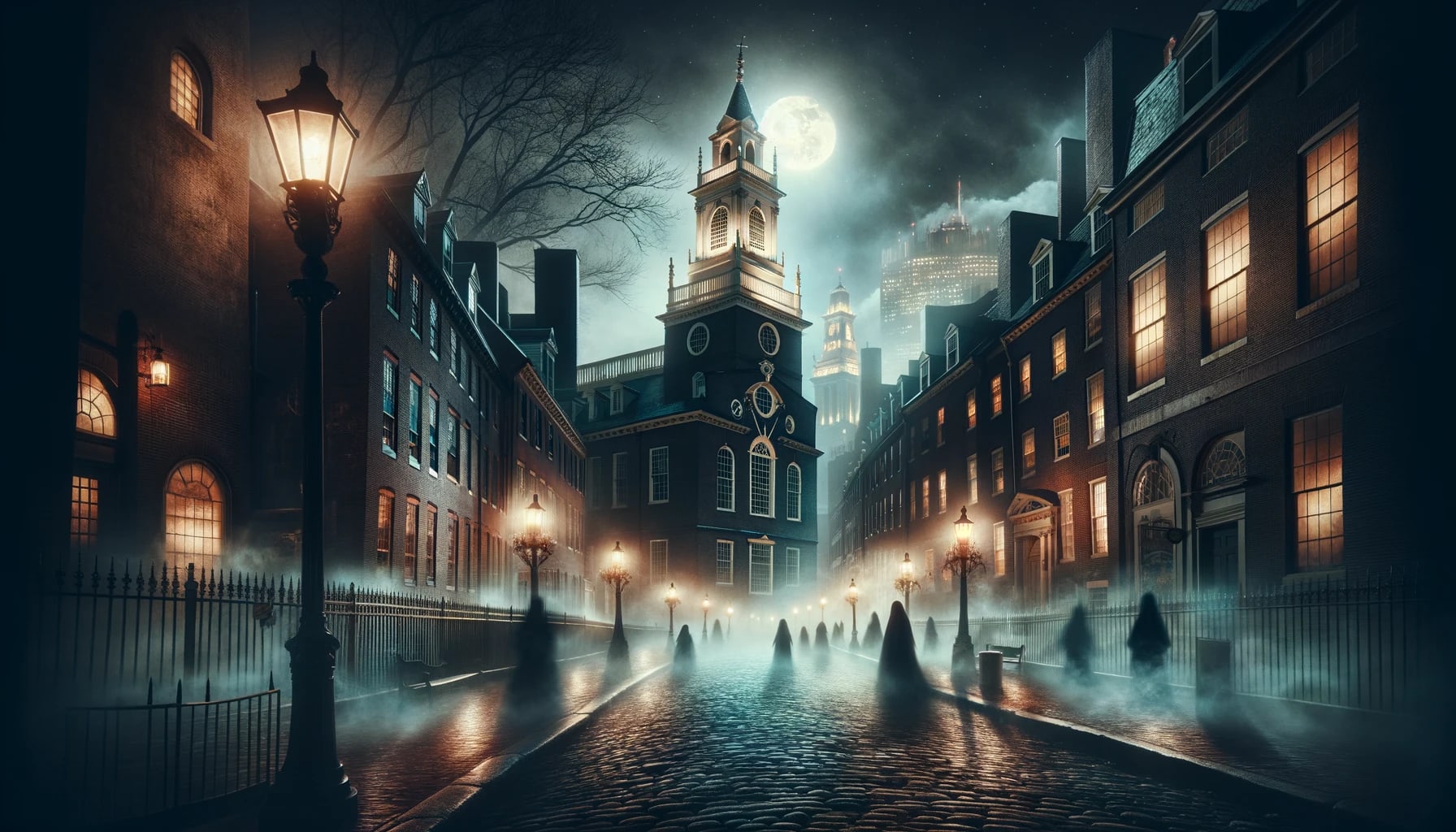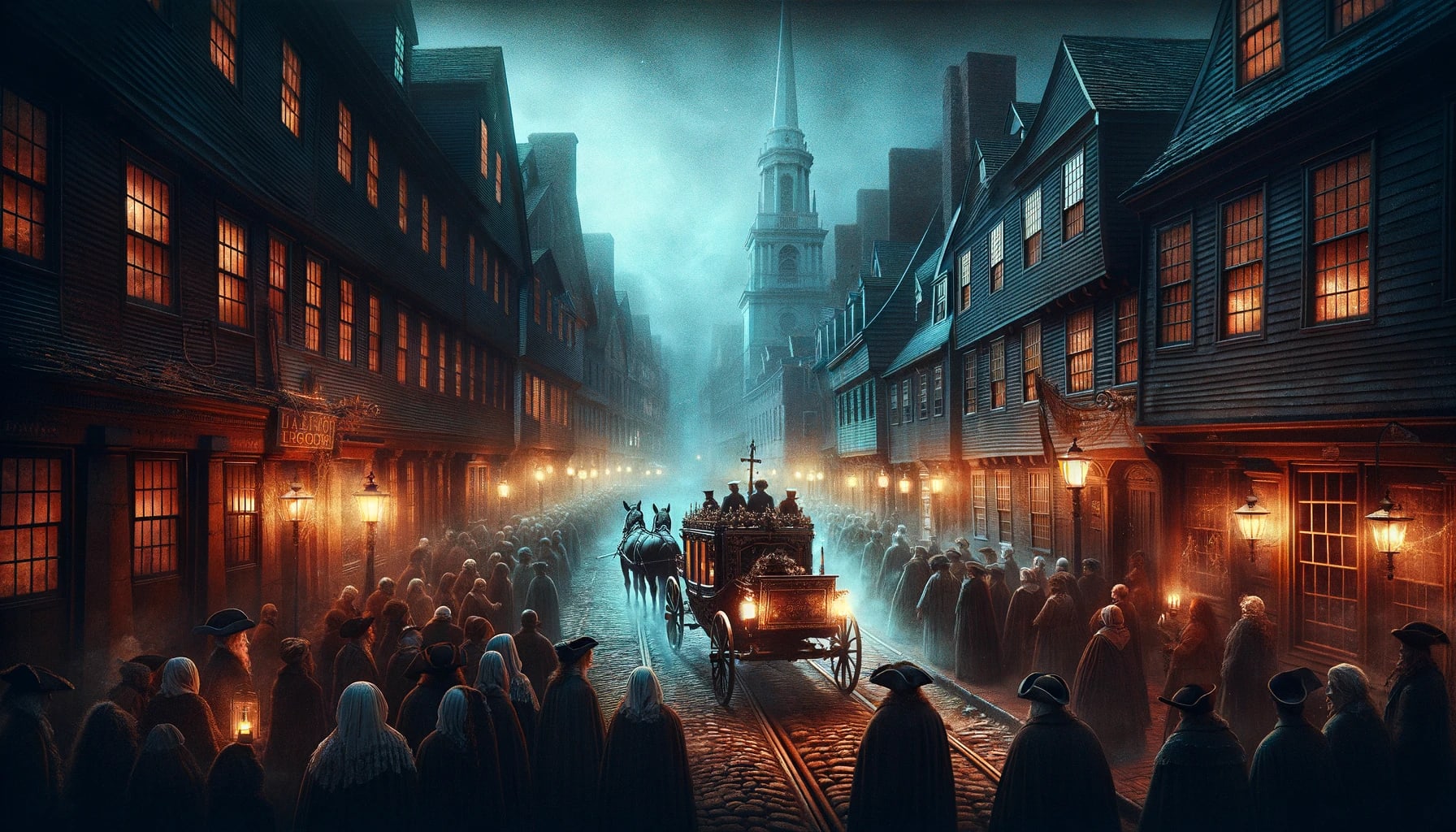The Ghosts of Kings Chapel Burying Grounds
In the heart of Boston, the King's Chapel Burying Grounds is one of Boston's most haunted places. Being a cemetery, many people may not find it surprising that ghosts are often seen here.
However, this is not only a haunted cemetery. This is a cemetery that plays a very important historical role in the history of Boston. It was established in 1630, the same year that the Puritans founded the city. Many notable people are buried here, including William Dawes, Jr., one of the men who aided Paul Revere in his famous Midnight Ride. But it is even more famous for the ghosts that are still seen here today.
Now, discover the mystery of the Burying Grounds as we take a look at one of the most paranormal places in Boston.
History of King's Chapel Burying Ground
Establishment in 1630
When Boston was founded by the Puritans, an area was decided to be set aside for the burial of the deceased. This was Boston's first graveyard and it has been in use since the year of Boston's foundation.
The land is actually the reason for the graveyard's name. It previously belonged to a man named Isaac Johnson, one of the founders and leaders of the city. He died in September of 1630. In his dying wishes, Johnson stated that he wanted to be buried on his land.
After his death, a Puritan tradition developed. Many people requested they be buried as close as possible to Johnson. They believed that he was such an important man that they wanted to be near him for eternity. According to Fodor's, the cemetery got its name because when the King's Chapel church was built, the chapel was constructed right across from the cemetery. Over the years, the graveyard grew to include more than 500 monuments and grave markers.
The Victorian Era
During the Victorian era, headstones were replaced throughout the cemetery with more modern-looking plaques that fit the time period. Additionally, the paths were moved around and created to look more pleasant to people who came through the graveyard.
While some might think that these changes make the graveyard less historically accurate, you could not be more wrong. These changes made the graveyard just as it was in the Victorian Era. Although you will not see the gravestones as they were originally placed, you will see them as the Bostonians would have seen them over 100 years ago.
What to see at King's Chapel
Joseph Tapping Headstone
Joseph Tapping was one of the most influential people buried at the King's Chapel Cemetery, being a well-known Boston goldsmith and merchant. Tapping died in 1678, making his headstone one of the oldest in the entire cemetery.
It is said that the headstone, commissioned by Tapping, is one of the best-preserved and most impressive in the entire cemetery. It depicts one of the most commonly seen motifs of the century, a skeleton and Father Time performing a battle over a candle flame, which, of course, represents the fragility and fleeting nature of human life.
Though this sounds extremely depressing, the headstone is even more interesting because the skeleton and Father Time are actually engaged in a battle over Tapping's life, which provides an element of narrative to the gravestone. Many people come to see this grave marker. The imagery is both melancholy and inspiring, making it easy to see why so many are attracted to it.
According to the Atlas Obscura, the headstone is usually hard to find for visitors. This is because of the Victorian changes made to the cemetery. Unlike in the 1600's, where the graves were in neat rows, the Victorian changes moved the headstones around and made them look pleasing from a design aesthetic, which was popular during the time.
Elizabeth Pain
The most famous of these gravestones actually inspired the famous novel, The Scarlet Letter, written by Nathaniel Hawthorne. The headstone belonged to Elizabeth Pain, who, in her life, had a child out of wedlock.
This was seen as an abomination and crime in the Puritan lifestyle. Those who had a child without wedlock would be branded with a scarlet "A" for adulterers. It is said that the "A" is still visible on this grave marker. Go check it out!
Residents of King's Chapel
Many important people are buried in the King's Chapel Burying Grounds. There is William Dawes, one of the men who rode with Revere and alerted the Continental Army to the approaching British. And there's Mary Chilton, the first woman off the Mayflower ship and onto Plymouth Rock in 1620.
Dozens of British casualties of the Revolutionary War were also laid to rest on the grounds of the King's Chapel Burying Grounds.
Many Revolutionary War soldiers who fell during the Boston Massacre are buried here. You may have heard of John Hancock, whose grave lies not too far from here, yet his entire family is buried at the King's Chapel.
One of the most influential and important people buried here is John Winthrop, the first governor of the Massachusetts Bay Colony.
Haunted
The Headless Woman
There are two very well-known ghosts that many have seen at the King's Chapel. The first is a headless woman who, according to Atlas Obscura, is seen roaming through the graveyards and paths throughout the cemetery. It is unknown who this headless woman is, yet she walks through the cemetery, looking mournfully for her head.
Many claim that they have seen her and she seems to be in intense emotional pain. There are those who believe that she might have lost her head during the Revolutionary War.
Buried Alive
Another famous ghost of King's Chapel Burying Ground is a man who was apparently buried alive.
It is said that this man had an extreme fear of being buried alive. On his deathbed, he asked to have a string attached to his finger and strung above ground with a bell attached. That way, when he woke up, he could ring the bell and people could dig him up and pull him out of the grave.
It is said that people heard the bell ringing and dug up the grave. When they found him, he was already dead. He died trying to claw his way out of the grave.
In the dead of night, people still say that they can hear a phantom bell coming from the cemetery, as the man still rings the bell, trying to alert people that he has woken up in the grave. Many people say that they hear this bell and they see a specter emerge from the King's Chapel, the man who was buried alive all those years ago.
Visiting King's Chapel Burying Grounds
It is very easy to get to King's Chapel. It is located right on Tremont Street in the Financial District, right next door to the historical Old City Hall. The Boston Common is not very far. If you are in the mood for a longer, yet quite pleasant, walk along Boston Harbor, it is near to the Bostonian Hotel, one of Boston's most haunted hotels.
For those who want an even more paranormal evening, take a Ghost Tour of Boston. You'll learn about the hauntings of King's Chapel and dozens of other locations throughout the city as you experience one of Boston's most popular after-dark experiences.

Boston's first cemetery where Puritan spirits still gather

Elaborate death's head carvings that seem to watch visitors



